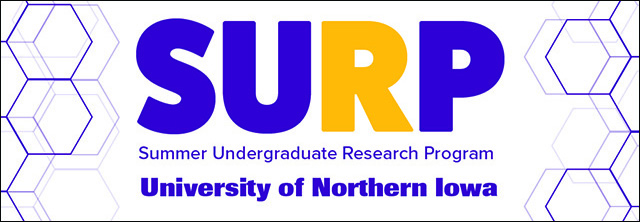
2022 Summer Undergraduate Research Program (SURP) Symposium
Location
ScholarSpace, Rod Library, University of Northern Iowa
Presentation Type
Open Access Poster Presentation
Document Type
poster
Keywords
Microorganisms--South Dakota--Wind Cave; Microbial genetics; Extreme environments--Microbiology--South Dakota--Wind Cave;
Abstract
Subterranean environments on Earth serve as an analog for the study of microbes on other planets. This has become an active area of research with the discovery of exoplanets. To learn about the microbial species living in Wind Cave, we are comparing methods to sample environmental DNA because most microbes cannot be cultivated using standard laboratory methods. We are then probing the environmental DNA with broad primers that are designed to amplify most life and narrower primers such as those specific to the domain Archaea. Of the methods compared, the Qiagen DNeasy Powerbiofilm kit produced the purest template as measured by its ability to be PCR amplified. The next steps are to optimize the DNA testing reactions to limit mispriming. In the future, these methods will be used to determine the identity, quantity, and spatial distribution of microbes in Wind Cave.
Start Date
29-7-2022 11:00 AM
End Date
29-7-2022 1:30 PM
Event Host
Summer Undergraduate Research Program, University of Northern Iowa
Faculty Advisor
Marek K. Sliwinski
Department
Department of Biology
Copyright
©2022 Abby K. Sliwinski, Emma W. Pellegrino, Nicole Geerdes, and Marek K. Sliwinski
File Format
application/pdf
Recommended Citation
Sliwiniski, Abby K.; Pellegrino, Emma W.; Geerdes, Nicole; and Sliwinski, Marek K., "Exploring Microbes at Wind Cave as an Analog for Exobiological Environments off Earth" (2022). Summer Undergraduate Research Program (SURP) Symposium. 1.
https://scholarworks.uni.edu/surp/2022/all/1
Exploring Microbes at Wind Cave as an Analog for Exobiological Environments off Earth
ScholarSpace, Rod Library, University of Northern Iowa
Subterranean environments on Earth serve as an analog for the study of microbes on other planets. This has become an active area of research with the discovery of exoplanets. To learn about the microbial species living in Wind Cave, we are comparing methods to sample environmental DNA because most microbes cannot be cultivated using standard laboratory methods. We are then probing the environmental DNA with broad primers that are designed to amplify most life and narrower primers such as those specific to the domain Archaea. Of the methods compared, the Qiagen DNeasy Powerbiofilm kit produced the purest template as measured by its ability to be PCR amplified. The next steps are to optimize the DNA testing reactions to limit mispriming. In the future, these methods will be used to determine the identity, quantity, and spatial distribution of microbes in Wind Cave.



Comments
High school student participant in UNI's Summer Undergraduate Research Program (SURP).